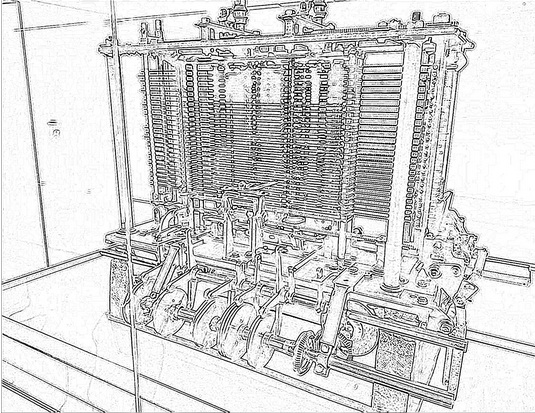Definition: Analytical Engine is known for the world’s first special-purpose mechanical computer and set the blueprint for the modern computer. It is designed by famous English Mathematician Charles Babbage between 1834 and 1846. Charles use brass gears to built the Analytical Engine, it’s not electric that is powered by steam engine.
Although mechanical in all its operations, the Analytical Engine could carry out calculations of arbitrary complexity under the control of punched cards. Conditional branching was possible, and Babbage had prepared test programs that included elaborate calculations based on nested loop structures. In a beautiful anticipation of twentieth-century thinking, Babbage showed that, given sufficient time, any finite calculation could be carried out by the Analytical Engine.
We’ll be covering the following topics in this tutorial:
Design of Analytical Engine
Analytical Engine is the successor of the Difference Engine. This machine’s use an Arithmetic Logic Unit (ALU), basic flow control, punch cards, and memory. Analytical Engine is used to calculate the numerical value of trigonometric functions of any formula. Babbage used a series of punch cards for input during the design of analytical engine that are for: arithmetical operations, numerical constants, and load and store operations.
Babbage Engine use primitive CPU that is the combination of physical pegs and rotating drums that’s become, “Turing-complete” because it satisfied the requirement of a Turing machine.
Babbage wrote thousands pages notes of the mechanism and drafted 250 drawings. But engine was never being completed; Because Babbage had conflicts with his chief engineer and British government withdrew its funding for the project.

Babbage Analytical Engine had four parts:
Babbage machine was designed with principle of four components: the mill, the store, the reader, and the printer. In today computer these components are essential.
Input: The Analytical Engine can be fed with both programs and data by punched cards. Babbage called this “the reader“.
Output: Babbage’s would have use analog printer and use punched cards for output as well as input.
Memory: The Babbage called this “store” in Analytical Engine, it is store 1,000 numbers of 40 decimal digits. The store was where data was held for processing.
Central Processing Unit: which he called “mill” perform all arithmetic operations and comparisons. It storing the numbers into registers and operations were controlled by a microprogram; and use control mechanisms for translating the user-oriented instructions into internal hardware; the control mechanism executes operations automatically, that is developed by Jacquard.
Ada Lovelace assisted Charles Babbage in his idea of analytical engine. Ada Lovelace was known for the world’s first programmer with the work with Babbage.The Babbage include loops and conditionals in machine’s programming language.
 Dinesh Thakur holds an B.C.A, MCDBA, MCSD certifications. Dinesh authors the hugely popular
Dinesh Thakur holds an B.C.A, MCDBA, MCSD certifications. Dinesh authors the hugely popular